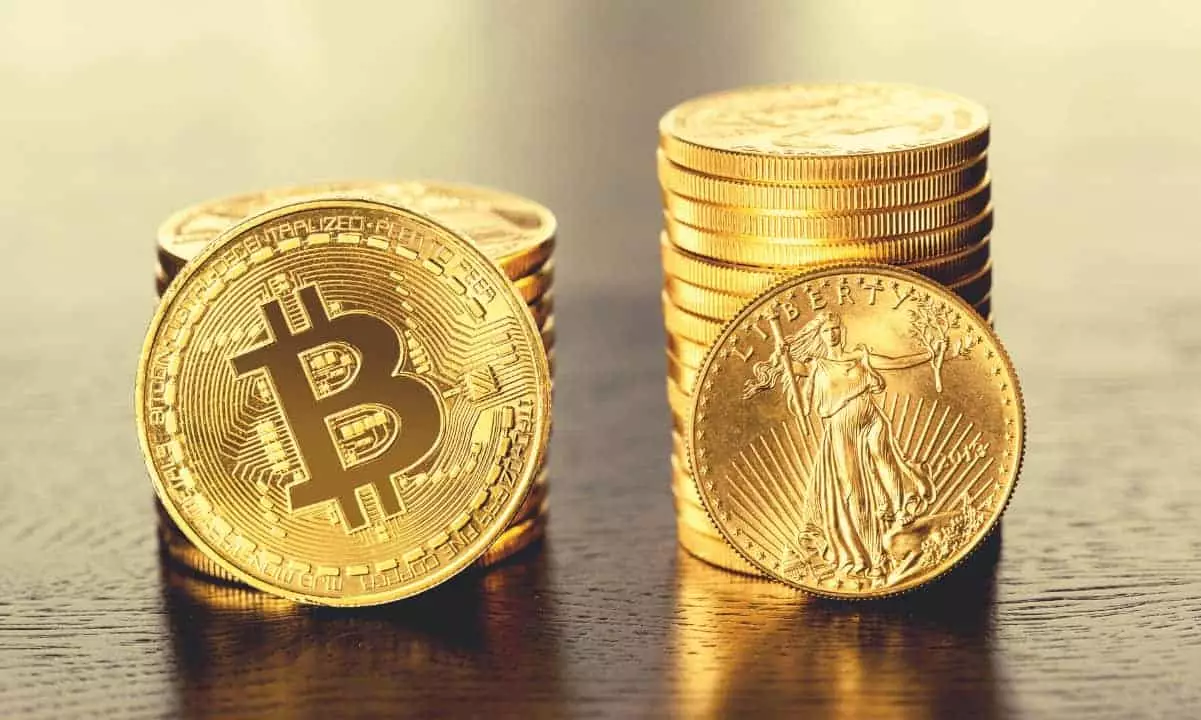Investment landscapes are rarely static, but the recent surge of gold beyond the $3,000 threshold signals a monumental shift that deserves not only recognition but scrutiny. The factors fueling this eruption in gold prices encapsulate a broader narrative of instability and uncertainty within global markets that we’ve not seen in decades. With geopolitical tensions, soaring inflation rates, and the instability of fiat currencies as catalysts, the dynamics at play reveal much more than mere number increments on commodity exchanges.
The Perfect Storm of Demand
Analysts from The Kobeissi Letter have aptly characterized the recent gold rally as the result of a “perfect storm.” This idea reflects a potent combination of reduced supply and increased demand, both ingredients crucial for a price surge of this magnitude. Central banks continuing their unprecedented gold accumulation brazenly paint a picture of apprehension about future economic stability. Over 1,000 tonnes purchased annually for three consecutive years creates a scenario where institutional demand actively reshapes the market landscape.
Moreover, consumers are not just observing from the sidelines; they are buying up physical gold in record quantities, evidenced by a staggering 115% rise in vault inventories in a mere two months. This surge is not random; it signals a definitive trend where the average investor is opting for a safer harbor amid fears of recession and inflation, coupled with reckless government spending that hits cumulative levels of $7 trillion. Many rightfully worry that such excessive expenditure erodes the fabric of fiat currency, leading to the kinds of fears that scatters investors toward gold, the timeless refuge amid uncertain tides.
The Resilience Against the Dollar
Remarkably, gold’s price trajectory defies traditional market roles. Peter Schiff has pointed out a fascinating contrast: while the U.S. dollar is usually inversely related to gold prices, recent trends reveal that the yellow metal has maintained its upward trajectory even as the dollar remains robust. This is groundbreaking. For years, market correlations dictated that a strong dollar would suppress gold prices, yet this paradigm seems to be shifting.
One cannot overlook the implications of this changing relationship. Gold has now positioned itself as a genuine safe haven, independent of typical patterns. Such unorthodox trends compel investors to reassess traditional economic teachings and adapt them to this new reality. In these transformative times, gold emerging as a destabilizing factor in a world fixated on fiat currency offers a glimmer of hope amidst the chaos.
The Competing Facet of Bitcoin
As gold claims an invigorated status, the crumbling fortunes of Bitcoin provide an interesting juxtaposition. Once heralded as “digital gold,” Bitcoin now stands starkly diminished in its ability to measure up against its physical counterpart. The latest data indicates a significant drop in Bitcoin’s purchasing power relative to gold, transforming it from a proactive investment choice into a high-risk proposition. Schiff’s own proclamation that “Gold is the apex predator that will eat Bitcoin” resonates deeply, illustrating a broader re-evaluation of what constitutes value in an investment portfolio.
Bitcoin’s recent performances have mirrored tech stocks more than the safe-haven narrative it once successfully touted. As it falls in tandem with the NASDAQ, investors should question whether Bitcoin is indeed a fleeting response to the evolution of money or is simply a replacement for risky equities. It prompts the unshakable inquiry: given today’s economic uncertainties, do cryptocurrencies truly hold the weight to endure as resilient investments?
A Historical Perspective
Gold’s 4,000-year track record as a store of value towers over Bitcoin’s relative immaturity of a mere 16 years. In an era defined by volatility and swift market disruptions, one has to appreciate the stability gold has offered through centuries, unmatched by any financial asset emerging in recent times. Institutional and consumer demand alike reiterates a growing consensus: gold is not just a relic of the past but a possible cornerstone for future financial stability.
As the currents of investment change, those who advocate for a prudent approach towards steadily appreciating assets are carving a path that acknowledges gold’s unique attributes. The confidence in gold amidst an erratic economic landscape does not merely echo in the markets but signifies a much deeper sentiment: a longing for security when the solidity of fiat currencies feels precarious at best. In this light, the precious metal not only achieves high prices but also restores a sacred trust in preserving wealth under environmental volatility.















